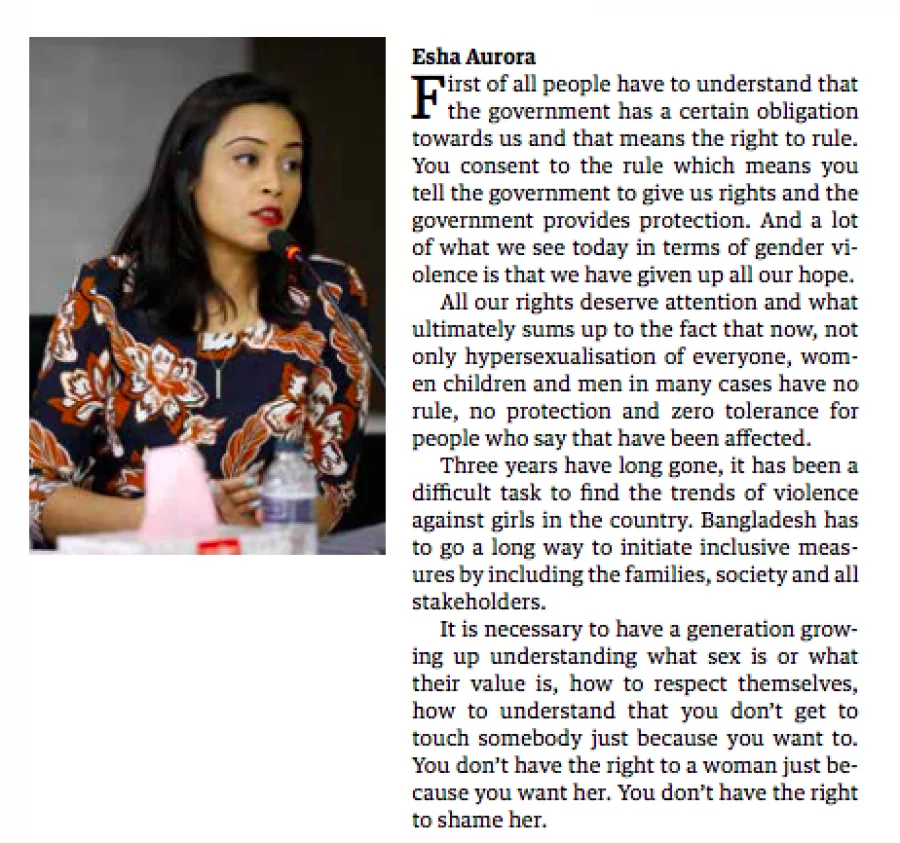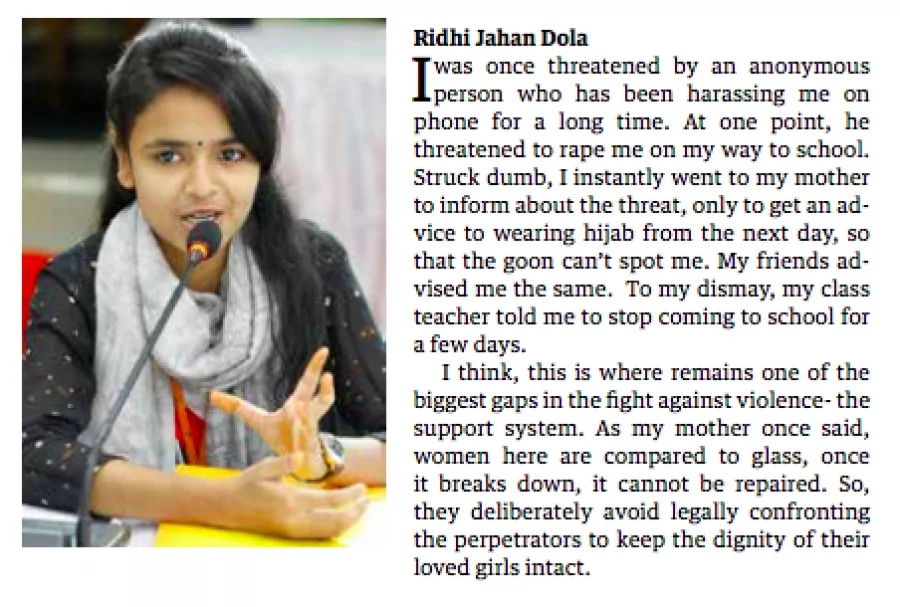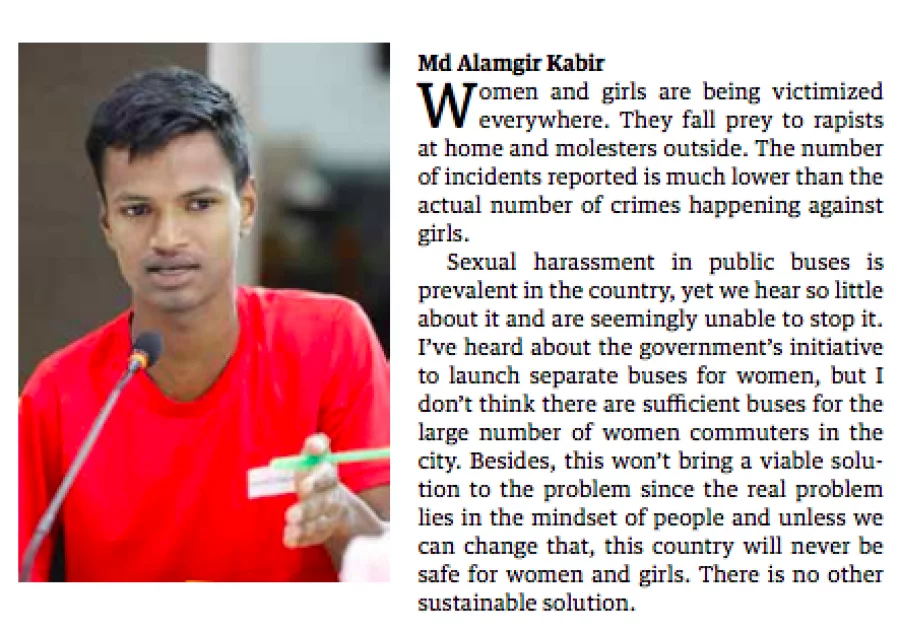Over the years, Bangladesh has proven itself to be a groundbreaking success story in terms of its soaring economy in front of the world. However, the economic development has evidently failed to translate into a social environment that safeguards the rights of women and children as violence against women and girls are widespread and rising sharply.
Bangladesh has recently seen a substantial rise in child sexual abuse. A recent report from Bangladesh Shishu Adhikar Forum (BSAF), a network of child rights organization in Bangladesh, revealed that a number of 593 children were raped in the year 2017, 33 percent more than the previous year. More worrying is that the comparative analysis of the situation also found an increase in the number of murder after rape- 44 children have been killed after rape until this August, while the cumulative number of similar cases was half in 2017.
The alarming rise was under sharp focus as a panel of experts from the non-profit, academic, government and private sectors gathered at a Dhaka Tribune roundtable event in Dhaka, moderated by Shabira Sultana Nupur, deputy director of Advocacy and Justice for Children, World Vision Bangladesh, on Sunday, September 9.
Titled “Ending Gender Based Violence Against Girls,” the roundtable event was a joint initiative by World Vision Bangladesh and the Dhaka Tribune, undertaken to map out solutions to eradicating violence against women and girls in Bangladesh.
Soaring cases of violence against women and girls
Bangladesh has been seeing an increase in number of rape in recent years. This year alone, the number of headlines about minors as young as four-years-old being raped was disturbingly high.
The number of total rape victims in the year 2017 goes as high as 818 after adding the women rape victims to the list, among which age of 384 victims could not be known, an Ain O Salish Kendra report states. Girls younger than 18 years constitute 87% of the other 434 victims. 60 of the victims were younger than 6, while 144 fall in the 7 to 12 years age group. The remaining of the victims were 13-18 years of age. According to the figures released by Bangladesh Bureau of Statistics in 2015, 5.17 percent of Bangladeshi girls fall victim to some sort of sexual violence before reaching the age of 10.
The overall number of minors being raped is deemed to be higher as a large number of the total incidents go unreported because of social stigma and victim-shaming. Delineating the issue as a national crisis, discussants at the table have said that lack of implementation of laws, unavailability of data on violence against girls and inability to break down social stigmas are making Bangladesh fall behind in achieving the target of eliminating violence against children.
With widespread gender inequalities in both public and private domains, the country became a breeding ground for violence against women and children, speakers said the at the roundtable. It is immensely detrimental to Bangladesh’s growth as an economy and most importantly, as a country, speakers said, adding that economic sustainability of a country largely depends on ensuring its women's safety.
Cyber violence: A new threat to the wellbeing of women and girls
Women in Bangladesh are disproportionately targeted violence and harassment facilitated online using digital technology. It is undeniable that the expansion of Information and Communication Technology (ICT) and growing internet penetration has heightened the economic development in the country, but due to the embedded prejudices against women in the social-physiological settings and inadequate legal protections have led to increased cyber violence against women.
Studies have found that the violence comes in many forms ranges from cyber stalking, revenge porn, cyberbullying, and trolling. Women and girls are found as the primary recipient of offensive and often aggressive sexual advances and defamatory messages in cyberspace from anonymous and fake sources. False and altered unclothed pictures of women along with spam, sex-act videos, rape threats, and indecent proposals have become the new norm of social media.
This rising cases of harassment in cyberspace have added a new dimension to violence against women and girls. According to data released by the Counter Terrorism Unit of Bangladesh Police, the number of complaints filed with their Cyber Crime division in this regard was 566 in 2017. The number of cases saw a sharp rise in 2018 with 845 reported cases of cyber violence until July, where women and children comprise 70 percent of the total victims.






 Recommendations
Recommendations
- Enact and enforce comprehensive legal frameworks and policies to protect against gender based violence. Increase the capacity of the law-enforcers and accountability of all duty bearers. Establish functional mechanism to monitor the enforcement across the country.
- Invest in prevention programs that end gender based violence and empower girls that includes education, health, life skills and resilience building.
- Scale up efforts targeting harmful gender norms and educate young people, women, and men about gender based violence and harmful practices, including through community based programs.
- Train all health providers to address gender based violence to ensure that needed services are available at all level, accessible, acceptable and of quality for all.
- Implement comprehensive sexuality education that address gender inequality, gender roles, gender based violence, and the rights girls and boys to seek services and justice.Besides incorporating the issue in curriculum and textbooks it is highly required to train the teachers to properly facilitate the education from class VI.
- Leave no one behind by promoting inclusiveness in all aspect including prevention and access to systems and services. Consult with the organizations of people with disabilities to understand and address the needs and priorities of girls with disabilities.
- Create and enforce gender responsive legal frameworks that address the increased vulnerability of girls in emergency and disaster situation and support protection and empowerment of girls and women.
- Make the data available on gender based violence and create a database todetermine the required actions and policy decisions.
At the table
Dr Samsul Alam
Member General Economics Division (GED), Planning Commission, Government of Bangladesh
Advocate Sultana Kamal
Human Rights Activist
Chandan Z Gomes
Director, Program Development and Quality Assurance, World Vision Bangladesh
Dr. Tania Haque
Professor, Department of Women and Gender Studies, University of Dhaka
Abu Sayeed Asiful Islam
Editor, Strategy & Planning, The Dhaka Tribune
Md. Alamgir Kabir
Child Forum Leader
Ridhi Jahan Dola
Child Forum Leader
Ashrafunnahar Misti
Executive Director, Women with Disabilities Development Foundation (WDDF)
Advocate Maksuda Akhter Laily
Director (Legal Advocacy & Lobby), Bangladesh Mahila Parishad (BMP)
Taposhi Rabaya
Assistant Director (Mediation & Awareness), BLAST
Esha Aurora
Senior Sub-Editor, Central Desk , The Dhaka Tribune
Tania Nusrat Zaman
Head of Child Rights and Protection, Plan International Bangladesh
Shabira Sultana Nupur
Deputy Director, Advocacy, World Vision Bangladesh
Md. Zahidul Kabir
National Coordinator, Social inclusion and Policy Analysis, World vision Bangladesh










 Recommendations
Recommendations